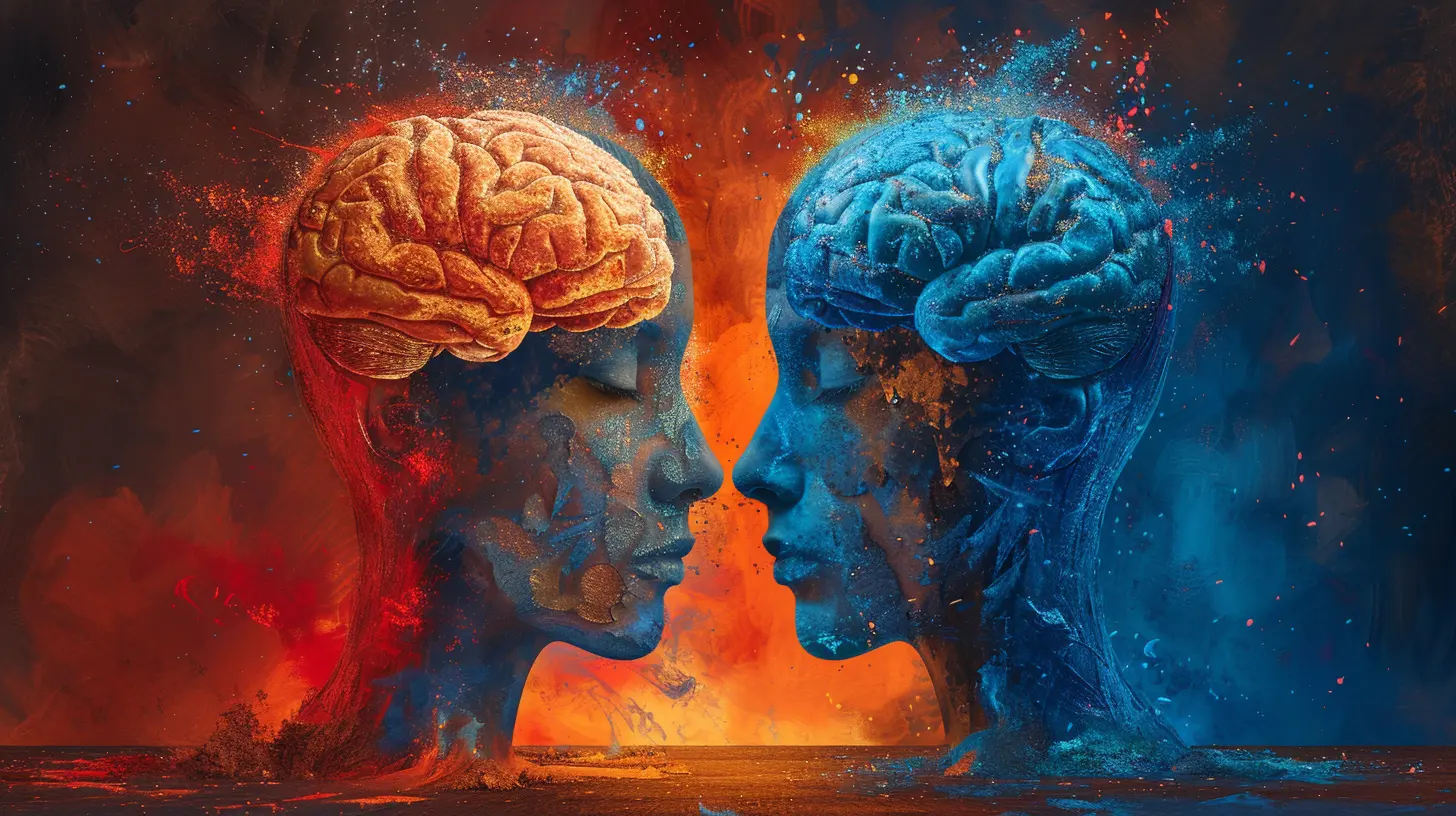The Role of Cognitive Bias in Everyday Decision Making
28 September 2025
Ever found yourself reaching for the same brand of cereal every time, even though there’s a whole aisle of options? Or maybe you’ve made a snap judgment about someone within seconds of meeting them. If you nodded along, you’ve had a little run-in with cognitive bias. Don’t worry, you’re not alone—we all do it. And today, we’re diving into how these sneaky mental shortcuts shape our everyday decisions more than we realize.

What Exactly Is a Cognitive Bias?
Let’s start with the basics. A cognitive bias is like a mental shortcut your brain takes when it’s trying to make sense of the world. Our brains love efficiency, right? So instead of analyzing every single bit of information in front of us, we rely on past experiences, gut feelings, and patterns we've picked up over time.Think of your brain like a GPS that sometimes takes the scenic route—it gets you there quicker, but not always accurately. That’s what a cognitive bias does. It helps us decide quickly (which can be helpful), but it often leads to errors in judgment.

Why Do We Have These Biases?
Great question! Cognitive biases stem from the way our brains are wired. We’re bombarded with so much information every second—there’s simply no way to process it all rationally. So our brains cut corners using things like:- Heuristics — mental rules of thumb
- Past experiences — “What worked before might work again!”
- Emotional influence — because we’re not robots, right?
Basically, biases are our brain’s way of trying to keep things simple in a very complex world.

The Most Common Cognitive Biases You Experience Every Day
Let’s break it down. There are tons of biases floating around in our minds, but here are the ones you're most likely to bump into on a regular Tuesday:1. Confirmation Bias: Seeing What You Want to See
Ever typed into Google, “Why is coffee GOOD for you?” instead of “Is coffee BAD for you?” That, my friend, is confirmation bias at work. We tend to search for, interpret, and remember information that confirms what we already believe—because it feels good to be “right.”📌 How It Affects Decisions: You might stick to a wrong belief or avoid considering other options because they don’t align with what you already think.
2. Anchoring Bias: First Impressions Stick
Let’s say you walk into a store and see a jacket priced at $500. The next one is $150. It feels like a steal, right? That’s anchoring. Your brain has latched onto that first price as a “reference point.”📌 How It Affects Decisions: You make decisions based on the first piece of information you receive, even if it’s irrelevant.
3. Availability Heuristic: What’s Easy to Recall Feels More Important
If you’ve recently watched a shark attack documentary, you might think swimming in the ocean is super risky. That’s the availability heuristic messing with you. You’re judging the likelihood of events based on what’s most vivid in your memory.📌 How It Affects Decisions: You may overestimate rare dangers and underestimate common risks just because of what’s been on your mind lately.
4. The Bandwagon Effect: Everyone’s Doing It
From TikTok trends to which phone you buy, this bias shows up everywhere. We tend to adopt beliefs or behaviors simply because many others have.📌 How It Affects Decisions: You might skip your unique perspective and go with the crowd—even if it's not right for you.
5. Loss Aversion: Fear of Losing Overrules Gaining
Humans hate losing. In fact, studies show we feel loss about twice as strongly as we feel gains. That’s why gamblers might keep playing to avoid walking away with a loss—even as they keep losing more.📌 How It Affects Decisions: You hold onto things (or people or investments) that aren’t good for you just to avoid the feeling of loss.

How These Biases Sneak Into Daily Life
You don’t have to be making life-altering decisions for biases to kick in. They show up in surprisingly small ways:- Shopping: Brands use pricing tricks (hello, anchoring bias!) and social proof (thanks, bandwagon effect!) to get you to buy more.
- Relationships: You might judge someone based on a bad first impression and never give them a second chance (confirmation bias strikes again).
- Work: Managers might favor the ideas of more vocal team members, ignoring quieter but equally valid opinions.
- News Consumption: Clicking articles that match your beliefs while ignoring others is bias in action.
It’s almost like having a mischievous little gremlin in your brain whispering, “Pssst, let’s just go with what feels right.”
Can Biases Be A Good Thing?
Here’s the twist: not all cognitive biases are villains. Sometimes, they’re downright helpful.Imagine you’re in a burning building. You don’t have time to weigh every option—you need to act fast. Relying on instinct and past experience (even if biased) could save your life. Biases help us navigate uncertainty, make snap decisions, and take action without being paralyzed by overthinking.
The key is knowing when your bias is helping and when it’s holding you back.
How To Recognize and Reduce Cognitive Bias in Your Decisions
Okay, so now you know these biases are lurking behind your choices… how do you fight back?1. Pause and Reflect
Before making a decision, ask yourself: “Am I reacting emotionally or logically here?” Just taking a moment to reflect can stop a bias from calling the shots.2. Seek Opposing Views
Got a strong opinion? Great. Now look for the opposite perspective. Challenge yourself. This is the best way to deflate that confirmation bias balloon.3. Embrace Data Over Gut
Try to base your decisions on evidence rather than anecdotes. Don’t trust your memory when it’s been watching horror movies—it’s going to throw sharks in your swimming pool.4. Slow Down Decision Fatigue
Sometimes we make poor choices simply because we’re tired of making decisions. When overwhelmed, your brain leans harder on biases. Schedule tough decisions when you’re fresh—you’ll thank yourself later.5. Use Mental Checklists
Not in a boring way—think of it more like a “bias bouncer.” Run your decision through a quick checklist: Is this based on facts? Am I considering all sides? Am I being fair?Final Thoughts: Let’s Be Gentle With Ourselves
Here’s the deal—cognitive biases are part of being human. Our brains are incredible, but they’re not perfect. And that’s okay.The goal isn’t to become a perfect decision-making machine. It’s to be aware—to notice when your brain might be taking a shortcut and gently question it. The more you understand your biases, the more power you have over your choices. And that’s kind of magical, don’t you think?
So the next time you’re standing in front of a shelf full of cereal, wondering why you always reach for the same box... smile. You've just caught a glimpse of your brain doing its quirky little thing.
And now, you know why.
all images in this post were generated using AI tools
Category:
Psychological ResearchAuthor:

Nina Reilly
Discussion
rate this article
1 comments
Julian Beck
Decisions can be tricky; blame it on our brain's quirky shortcuts and enjoy the ride!
October 2, 2025 at 3:15 AM

Nina Reilly
Absolutely! Our brain's shortcuts make decision-making fascinating and complex. Embracing the quirks can lead to better understanding and growth. Enjoy the journey!


